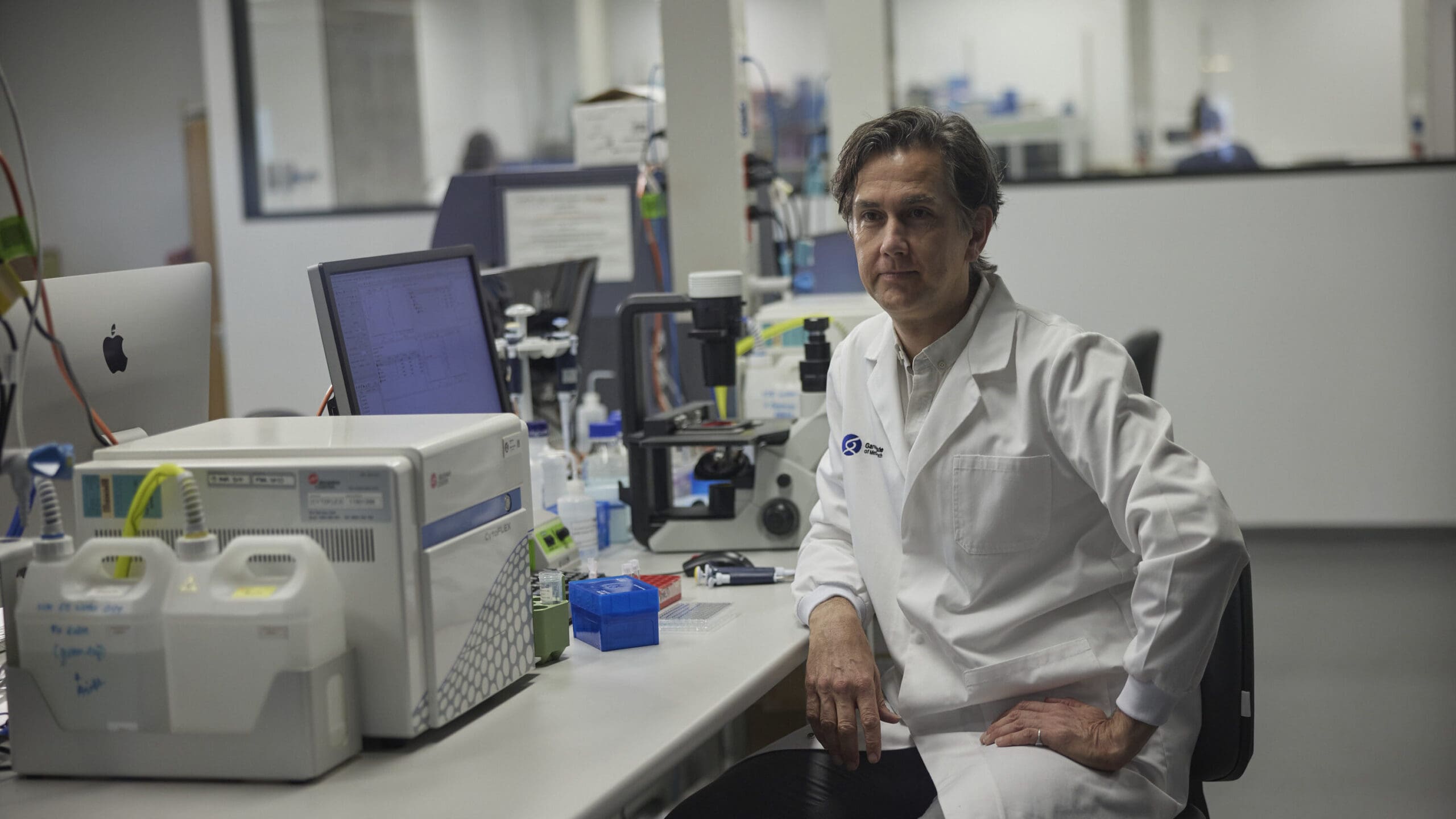
At Cancer Council, the incredible contributions from our supporters help us fund significant advancements in .
We spoke to Professor Alex Swarbrick about how he and his team are using advanced technology to study various types of cancer and develop treatments, as well as how doctors are working with clinicians and their patients to progress the way we treat cancer.
Revolutionary cellular genomics
Cellular Genomics is a new approach to study the genetics and genomics of healthy and disease processes at the fundamental level of the cell.
Previously genomics was limited to studying biological processes in tissue samples that contained millions or billions of cells. While this taught us a huge amount, we were studying the ‘average’ behaviour of all those cells.
Imagine a smoothie that’s made up of a blend of different fruits and vegetables. While you can still learn a lot about what went into the smoothie by tasting it, it can be hard to distinguish what exact ingredients are present.
Similarly, cellular genomics enables us to study biological samples (the smoothie) on a cellular level, meaning we can see both the individual cells (the ingredients) and how they interact with other cells within the sample.
Among the billions of cells within a biopsy, there could be immune cells, cancer cells, fibroblasts, and countless other cells, which form a complex cellular ‘ecosystem’ that can determine patient prognosis and drug response.
By sequencing the genetics of thousands of cells per sample, we can learn about the cellular composition of the tumour, to better understand its behaviour, malignant potential and possibly predict a patient’s drug response.
A great example is immunotherapy, which is a fantastic breakthrough treatment that activates your immune cells to specifically attack cancer cells.
Since immune cells can make up as little as 5% of a tumour, these new technologies can help us precisely study immune populations to better understand their behaviour and develop new kinds of therapeutic interventions.
The organ in which tumours form is becoming less important
Today, cancer research looks more and more at the commonalities and differences across tumour types, whether they’re in a breast, prostate, liver, lung or even in a bone. This helps us discover treatments that work across multiple cancer types.
A big reason why this is possible is because we can now sequence the genetic make-up of tumours.
For example, breast cancer is a large area of research, in part because it is a common disease and 98% of breast cancer patients are happy to participate in research when you ask them to donate a biopsy. Because of this rate of breast cancer research development, 5-year survival rates have climbed from 71% in the 1970s to 91% today.
However, it is not only breast cancer patients that benefit – this research can lead to lessons that can be translated to other, rarer cancer types.
For instance, Herceptin, a drug first developed against the HER2 protein in breast cancer, is now being used in dozens of trials for other disease types.
That’s what we want to see across all cancer types.
The important partnership between researchers, clinicians, and patients
We now build partnerships with clinicians and their patients who donate tissue that’s excess to their diagnostic needs.
That tissue can come into our research and teach us about the fundamental building blocks of their tumour, which we can then relate to their clinical behaviour.
Over time, we hope to start seeing patterns among the observations we make between specific cell types or cell interactions, and the clinical behaviour of that patient.
For example, maybe tumours with a particular cell type present will be more likely to respond to a given therapy. That then gives us insights about the connections between those cells and drug response.
My lab is embedded in the Kinghorn Cancer Centre, a joint venture of the Garvan Institute of Medical Research and St Vincent’s Hospital Sydney, allowing us to link the clinic with the laboratory. We also work with clinicians at Chris O’Brien Lifehouse and Concord Private Hospital, to name a few.
To achieve our goal of defeating cancer, we must build a broad team with diverse expertise. I am motivated by the enthusiasm and passion that these wonderful clinicians and scientists bring to these challenges.
To support more life-saving cancer research and programs, consider .






